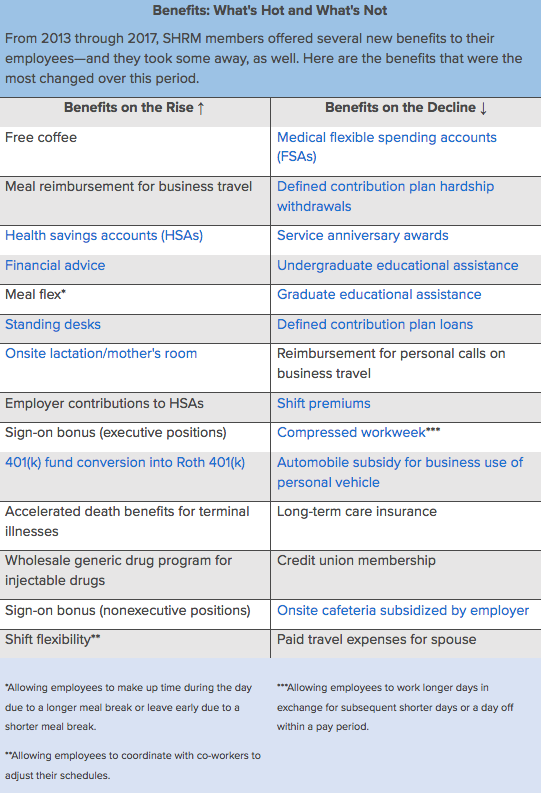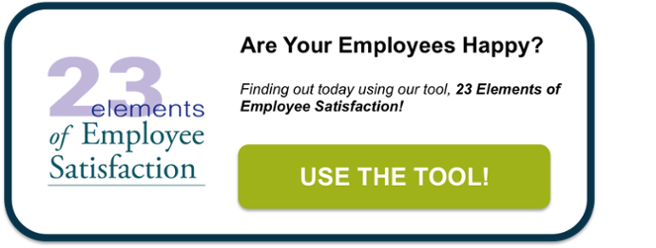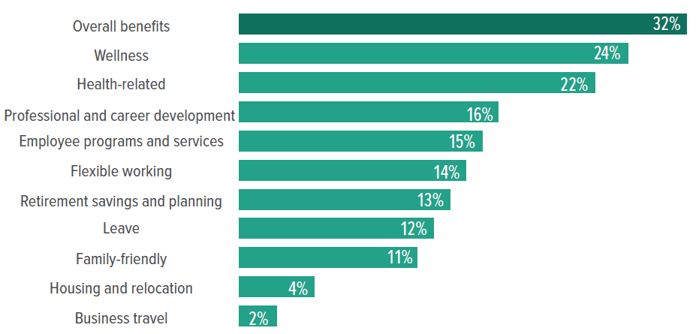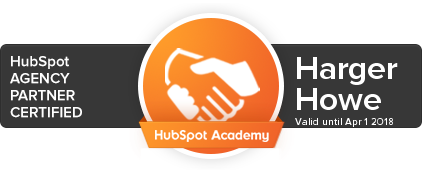Whether you’re targeting a Millennial or Gen X-er who is straight out of college with loans or an established Boomer who is used to having certain benefits provided, what you promote matters. Choosing the most popular benefits makes for easier talent acquisition and a healthier candidate pipeline. Here are five benefits that we recommend you highlight with potential hires if you want to close the deal.
What Do Candidates Want?
As you can see from the Society of Human Resources Management (SHRM) chart below overall benefits are the most popular (which is to be expected). What is less than expected is that relocation and a family friendly environment is way down at the bottom of the list.
Candidate priorities are simple in today’s recruitment market. They want to stay healthy and move up in their career. While employee programs and a flexible working environment are appreciated, they still do not rank as high as the classic medical benefits package.
What Benefits are in Vogue?
SHRM also created a helpful chart of what benefits are on the up and downswing from 2013-2107.

Simple things like free coffee and meal flex benefits seem to be on the upward trend, but so do more valued items like standing desks (for maximum health), health savings accounts and 401K options. Sadly, on the other side of the table it’s clear that companies are phasing out items like flex spending accounts, defined contribution plans and long-term care assistance, which are all typical of a robust, traditional benefits package.
Certain items like an on-site cafeteria, service anniversary awards (which have been proven to be less valuable to Millennials) and spousal travel expenses are smart to move on from if cost is a factor, but employers should be mindful that candidates care about health benefits and long-term planning. And, when it comes down to your company and one other contender, the best benefits package will usually win.
Other Items to Consider
While traditional benefits packages commonly known as “full” and health benefits are major goals for candidates, there are plenty of other options for employers to consider if they want to compete in an ever more competitive recruitment market. Some benefits to consider include:
Student Loan Assistance
This benefit is truly needed by a good portion of the population. Another SHRM article reported these astounding statistics:
- Over 37 percent of respondents had fallen behind on their student loan payments.
- 43 percent reported being unable to prepare properly for retirement due to their student loans,
- 36 percent would prefer student loan repayment benefits, such as contribution matching or automatic payroll deductions, over a 401(k).
- 29 percent would prefer student loan repayment benefits over health benefits.
Parental Leave
Per a third SHRM article, parental leave across the nation is slated to be just six weeks (per the President’s budget proposal from May). However, some companies are offering much more generous (and appreciated) leave periods to happy fathers and mothers (such as American Express, which offers 20 weeks). According to the previously mentioned article:
- 30 percent of organizations provided paid maternity leave, which includes coverage by family or parental leave policies but excludes what is covered by short-term disability or state law. This offering has increased from 26 percent in 2016.
- Fewer organizations (24 percent) offered paid paternity leave, up from 21 percent last year.
With so few employers even offering maternity leave and even fewer offering paternal leave, this benefit could make potential employees’ heads turn.
Financial Planning Assistance
According to SHRM’s article of June 2nd this benefit is slated to be a 2017 – 2018 trend. Employees often have difficulties understanding their future from a financial standpoint and employers who understand and capitalize on that will be able to recognize the rewards.
--
Of course, not all organizations and companies are created equal. In order to recruit well, you need to dig into what’s most important for your employee population. We recommend regular surveys to help you discern what attracted your talent initially and what keeps them in-house.
Are you unsure what your employee population wants or needs? Consider using our free employee satisfaction tool to find out.












